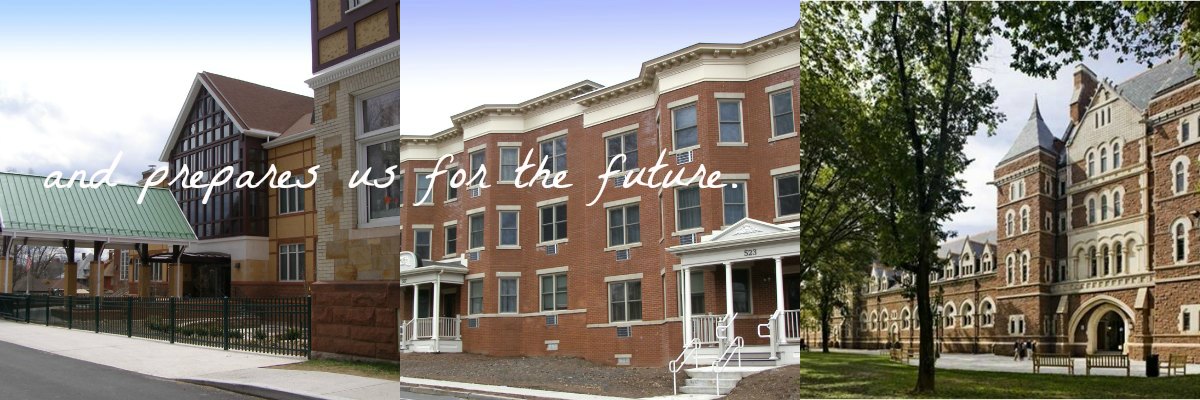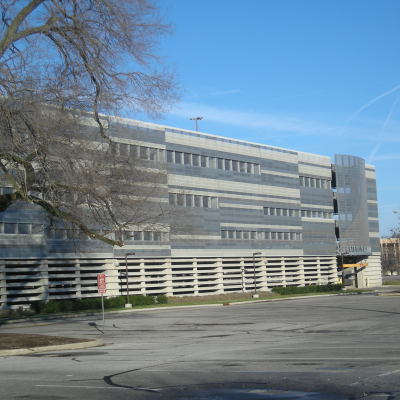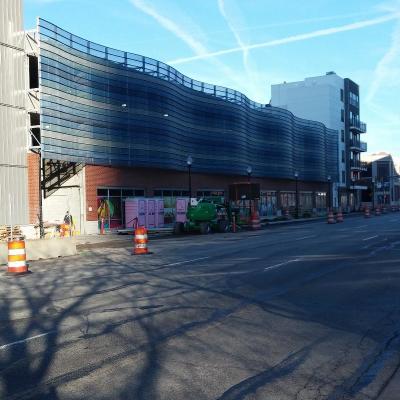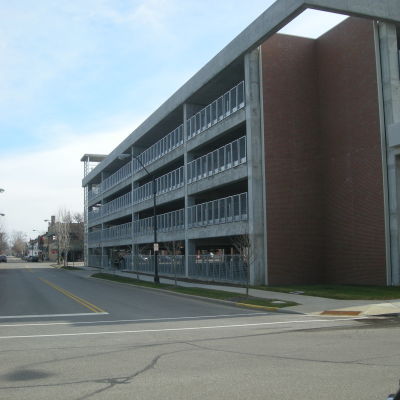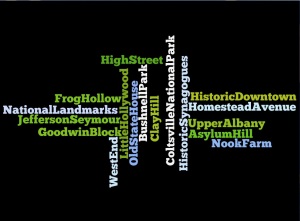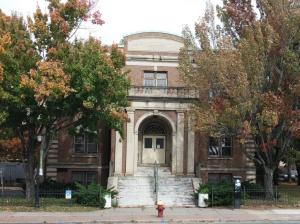I wish to begin this screed with the disclosure that I favor public transportation over any form of enabling the automobile. These days it goes against conventional wisdom for sustainable cities to favor cars rather than explore and create alternative transportation resources. Sermon over.
The next concept I want to address if forced is the design and development of parking facilities which contribute to a city’s self-esteem. In a recent meeting my neighborhood was presented with a design to expand a garage by an architect who termed the bunker a reflection of “modern” architecture. Precast concrete with concrete panels of a rough surface painted white does not, in my opinion, represent anything modern rather than something inexpensive. At the meeting I made the point that the garage does little to contribute to the architectural transition to its adjacent neighbors, one of the older, historic neighborhoods developed in the 19th-century. Landscaping is a relatively inexpensive solution, perhaps covering the new structure with ivy to soften the exterior is one consideration.
Enough about ivy, this blog wants to explore examples of parking structures which are both functional but exciting as architectural elements. On December 8, 2014 we posted an Urbanland article on our Facebook page about a multi-functional garage being developed in Miami Beach, Florida. It is about the utilization of space to accommodate several uses which makes the project interesting and financially feasible. Ground floor retail as a means to soften the exterior and make the structure pedestrian-friendly is a good response to form based zoning. Rather than a monolith the garage becomes part of the streetscape.
 In Columbus, IN, Cummins Diesel, the city’s major employer needed to expand both parking downtown and housing for its exploding workforce.The solution was to build housing facing the street encapsulating a parking core (pictured above).
In Columbus, IN, Cummins Diesel, the city’s major employer needed to expand both parking downtown and housing for its exploding workforce.The solution was to build housing facing the street encapsulating a parking core (pictured above).
Further I submit for your evaluation and consideration several neat (in my opinion of course) examples of how parking structures have been incorporated in a downtown streetscape or on a campus. Some are expensive, some relatively inexpensive however all show a desire to standout as architecture and not as cast concrete monoliths. It is all about what a city thinks of itself and therefore public opinion demands more of projects filling open spaces.
Okay, your turn to chuck the concrete at me and respond. Feel free to join the conversation below or comment on Facebook.
Happy and prosperous New Year!






